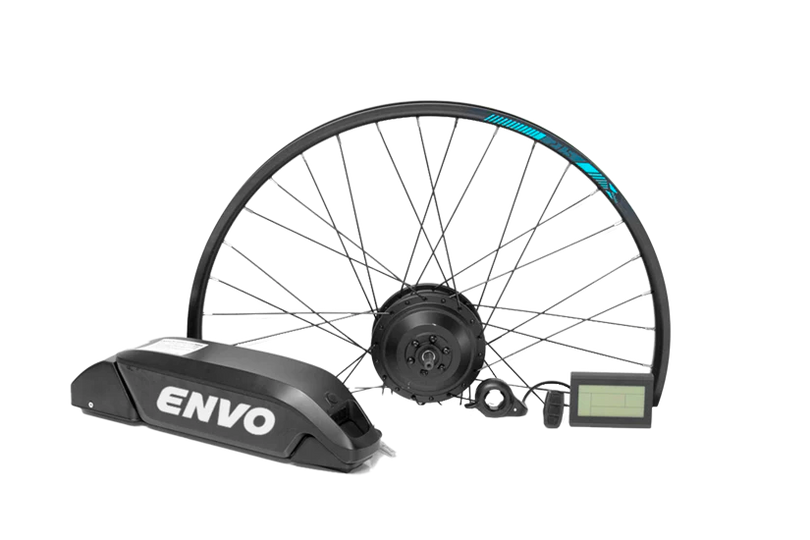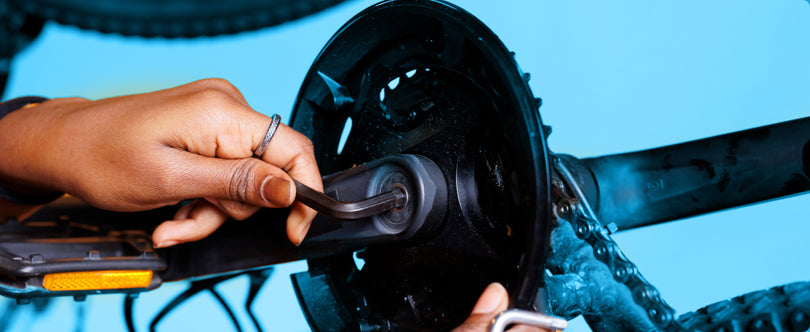Camping with your e-bike opens up a world of adventure, taking you far beyond your daily commute and into serene nature trails or thrilling mountain tracks. The added range and convenience of an e-bike make it the perfect camping companion, letting you explore more while conserving your energy.
But one key question remains: Can you charge your e-bike while camping?
The answer depends on your trip’s length, the remoteness of your destination, and the resources available. Let’s dive into the options for keeping your e-bike powered in the wilderness so you can explore so much further.
What people often question is: Can I charge my e-bike while camping?
Now that camping grounds are reopening for the summer, this question is coming up a lot. The answer depends on the duration of your journey into the wilderness – and just how wild you’re going.
Can I charge my ebike battery using a portable power station?
portable power station is a convenient solution for charging your e-bike while camping. These devices act as portable batteries, storing enough energy to recharge your e-bike’s battery.
Here’s how to determine if a power station will meet your needs:
Steps to Calculate Power Compatibility
-
Understand Your E-Bike Battery Capacity (BC):
Calculate in watt-hours (Wh) using the formula:Example: A 36V, 10Ah battery = 360Wh.
-
Know Your Power Station’s Capacity (PC):
Use the same formula to calculate the power station’s capacity:Example: A 56V, 10Ah power station = 560Wh.
-
Check Your Charger’s Power (CP):
Determine the power required by your e-bike charger:Example: A 24V, 12A charger = 288W.
-
Compare Power Needs:
- The power station must have a higher capacity than the e-bike battery: .
- The charger’s power must be less than 75% of the power station’s output: .
Example:
To charge a 360Wh battery with a 288W charger:
- A 560Wh power station and 400W+ output station are sufficient.
Portable power stations are an excellent choice for multi-day trips, but ensure they have enough capacity to match your needs.

Can I charge my ebike battery using a solar panel or car battery inverter?
You can use your car’s battery with an inverter to charge your e-bike, but caution is key to avoid draining your car’s battery.
How It Works:
- An inverter converts your car’s 12V DC power to the voltage needed for your e-bike charger.
- Use an alternator tester or energy monitor to prevent over-draining the car battery.
Example Calculation:
To charge a 36V, 13Ah battery with a 2A charger through a 12V, 10A car power plug and a 200W inverter:
- Battery capacity:
- Charger power:
- Car power source:
- The charger needs 84W, which is less than 75% of the car’s power (120W).
This setup will work, but always have a backup plan to avoid being stranded with a dead car battery.
For solar chargers it only works if you have a buffer battery of enough capacity or the production rate is 25% more than what the charger requires. Solar panels have a low energy output and can take far too long to charge even simple devices. If you have a boost module, it will take your solar panel's output voltage to the required current charge voltage & amperage to charge your batters.
Does your campground have power outlets?
Many organized campgrounds provide power outlets, which is the simplest way to charge your e-bike. Before heading out:
- Research campgrounds online to check for available outlets.
- Call ahead to confirm the reliability of power sources.
When using public outlets, always bring your charger and an extension cord. Some outlets may not be close to your tent or bike storage area.
Will there be places to plug in?
The easiest way to charge your e-bike battery is to bring a charger and plug in to a wall outlet. So, before you leave on your trip, take some time to research the territory you’re exploring. You may get lucky and find a charging station along your route, although in Canada there aren’t as many as we might like outside the city, despite e-bike popularity. You’re more likely to rely on pubs, coffee shops, bars, stores, restaurants and even campgrounds along the way.
This may seem obvious, but don’t just walk into a rural store and plug in your extension lead. Always ask before plugging in your e-bike or battery and purchase something as a show of good faith – or several things if you’re going to be there a while. Make conversation and be a customer rather than a leech. If it’s a coffee shop or restaurant, get something to eat and settle in so you have time to recharge.
It may be worth calling ahead to check how the owners of these establishments feel about you using some of their power. Always take an extension lead with you, especially if your battery isn’t easily removable from the electric bike. You don’t want to wheel a heavy mountain bike into someone’s restaurant, hat in hand.
Riding your e-bike off-grid
Off-grid is a term that these days makes us think of not having WIFI or phone signal. What off-grid actually means is having no access to the power grid. If you’re heading off-grid for several days hunting in true wilderness, having one or more spare batteries fully charged is your main option. If the area is protected, make sure you’re allowed to ride there.

Alternatively, you could calculate how many watts you’ll use per mile on the terrain you’re exploring, based on how far you intend to go. You can then buy or build a battery that can do it in a single charge. If you do this, leave at least a 25% margin of extra juice so that you don’t end up stuck somewhere with a dead battery. Don’t just rely on your e-bike’s stated range from the manufacturer, as this is measured in perfect conditions, i.e. a person of average weight riding flat roads on a calm day.
Colder temperatures, varied terrain and wind will significantly decrease your bicycle’s single charge range. Once you’ve figured out your e-bike’s range on rough terrain, you could consider taking the experience to the next level: Snow Bike.
Using a generator
If you have a generator with a high power output, you’ll of course have no problem charging your e-bike, as long as you’ve factored in how much power you’ll be needing for everything the generator runs. It’s always best to have a safety buffer – at least 20% more power than you think you’ll need, to avoid getting into trouble.
If you have more specific questions about e-bike power levels, batteries, or different products, check out our extensive blog and FAQ sections.
























